The high-precision slitting technology of the hot stamping foil slitting machine is a key process in the packaging, printing and decoration industries, and its core lies in the comprehensive optimization of material properties, mechanical design and control system. The following is a technical analysis and key points to achieve high-precision slitting:
1. The core system of the slitting machine is composed
• Unwinding system: constant tension control to avoid stretching or wrinkling of the material.
• Web Guiding System (EPC): Real-time detection of the edge position of the gold foil through photoelectric sensors, and dynamic adjustment of the transverse position of the coil (accuracy up to ±0.1mm).
• Slitting unit: Round or flat knife slitting, the blade material (such as cemented carbide) and angle design directly affect the quality of the cut.
• Winding system: driven by servo motor, to ensure stable coil tension and neat winding.
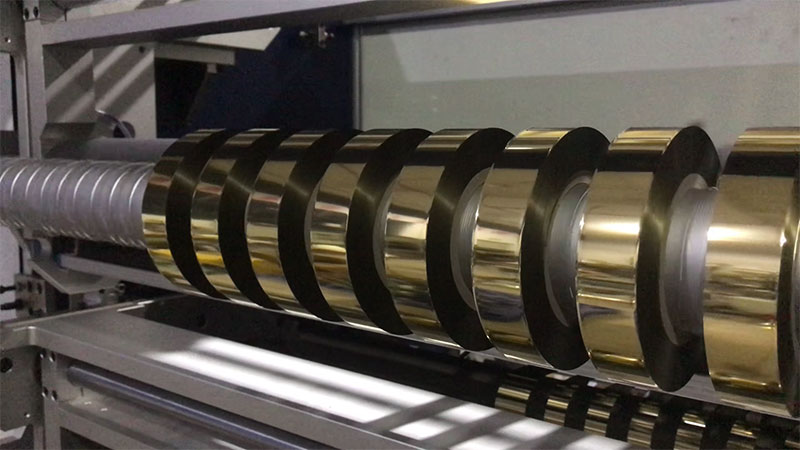
2. Key technology of high-precision slitting
(1) Tension control
• Closed-loop tension control: through magnetic powder brake/servo motor + tension sensor feedback, keep the slitting process tension constant (typical value: 5~20N, adjusted according to the material).
• Segment control: independent tension adjustment of unwinding, slitting and winding to avoid material deformation.
(2) Dynamic correction technology
• Photoelectric or CCD edge detection: real-time monitoring of the edge position of gold foil, the correction accuracy can reach ±0.05mm.
• Hydraulic/electric actuators: fast response to guiding instructions (response time < 50ms)。
(3) Slitting tool optimization
• Tool material: diamond-coated or tungsten carbide round knife for longer life and less burrs.
• Tool angle: The cutting edge angle is usually 20°~30°, which is suitable for different thicknesses of gold foil (12μm~50μm).
• Tool vibration control: Pneumatic or hydraulic pressing device is used to reduce vibration during cutting.
(4) Motion control
• Servo drive system: positioning accuracy≤0.01mm, speed synchronization error< 0.1%。
• Multi-axis collaboration: Coordinate unwinding, slitting, and winding speed through PLC or dedicated motion controller.
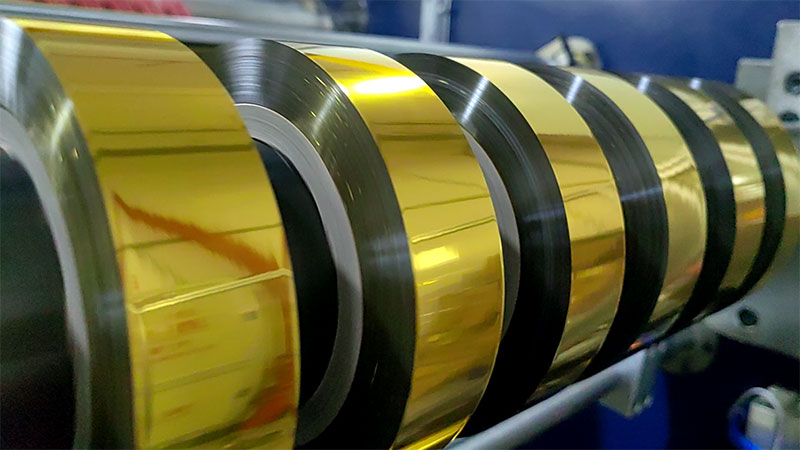
3. Adaptation of material properties
• Gold foil layer structure: Tension, tool pressure and temperature need to be adjusted for the characteristics of the polyester film (PET), aluminium plating and glue layer (some models are equipped with a heated knife to reduce sticking).
• Slitting speed: usually 50~300m/min, too high speed may lead to edge delamination or burrs.
4. Intelligent assistive technology
• Visual inspection system: online detection of slitting defects (such as burrs, sawteeth), real-time feedback adjustment parameters.
• Automatic tool change system: Automatically change the blade according to the cutting mileage or the degree of wear.
• Data traceability: record slitting parameters (tension, speed, temperature) and correlate with quality to optimize the process.
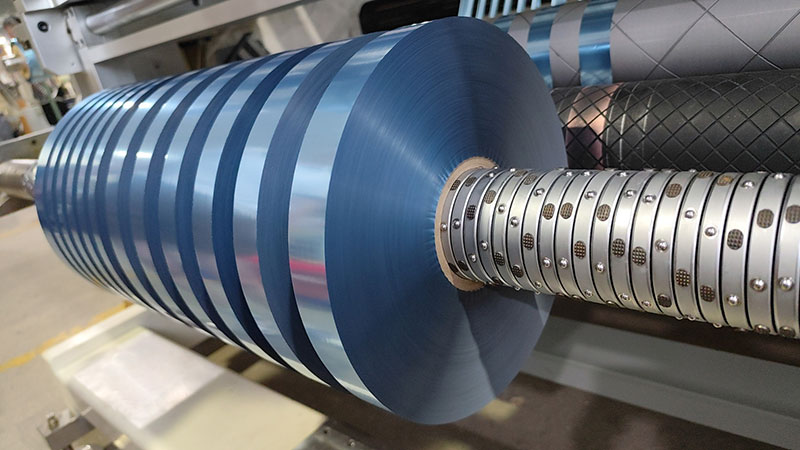
5. Common problems and solutions
• Flash: Check tool sharpness or adjust pressure.
• Coil serpentine movement: Optimize the response parameters of the guiding system or clean the guide rollers.
• Uneven winding: Adjust the taper tension or use the pressure roller to assist.
6. Industry development trends
• Ultra-narrow slitting: the minimum slitting width can reach 1mm (as required by the label industry).
• Laser slitting: non-contact cutting, suitable for ultra-thin gold foil (< 10μm)。
• Digital twin technology: pre-set parameters through virtual simulation to reduce test losses.
summary
The achievement of high-precision slitting relies on stable tension control, precise web guiding systems, optimized tool design, and intelligent closed-loop feedback. Different application scenarios (e.g., cigarette packs, gift packaging) require specific adjustment of process parameters, while regular maintenance of equipment (e.g., tool grinding, sensor calibration) is the key to maintaining long-term accuracy.



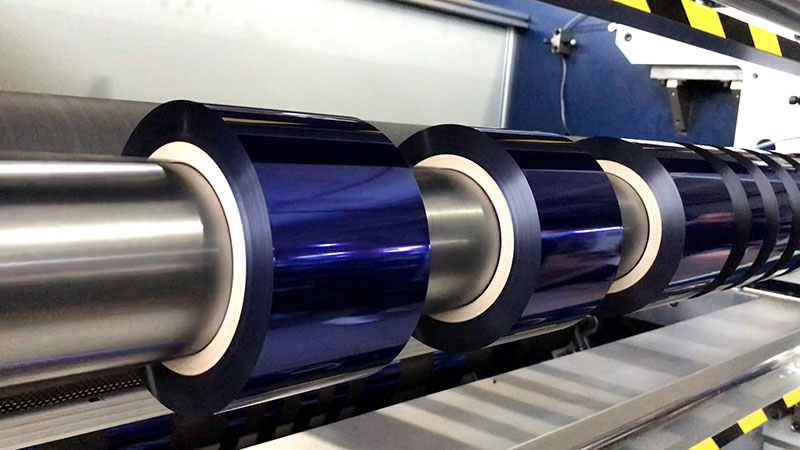
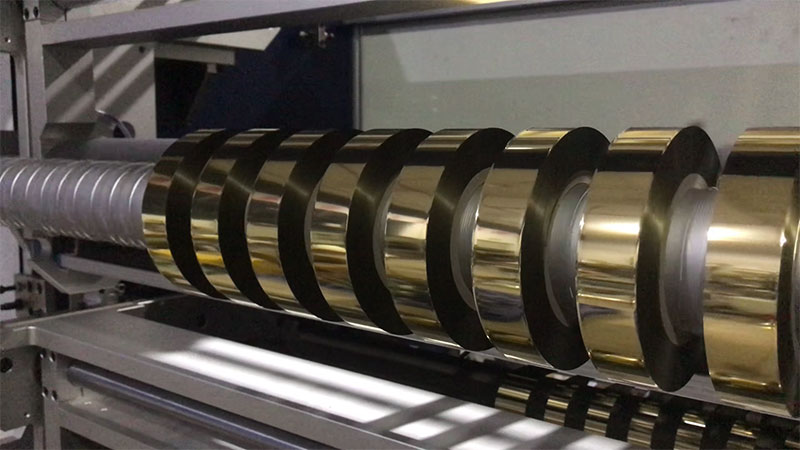
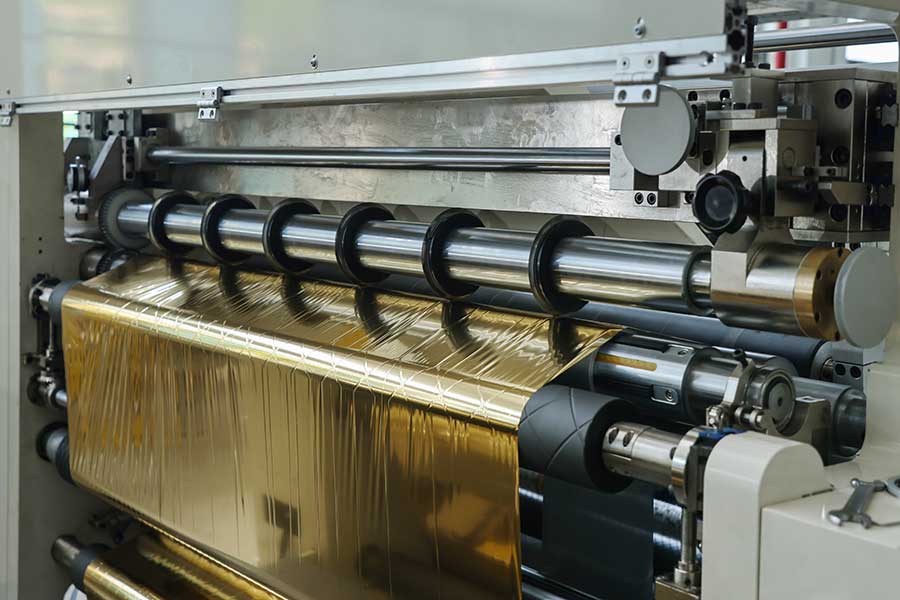
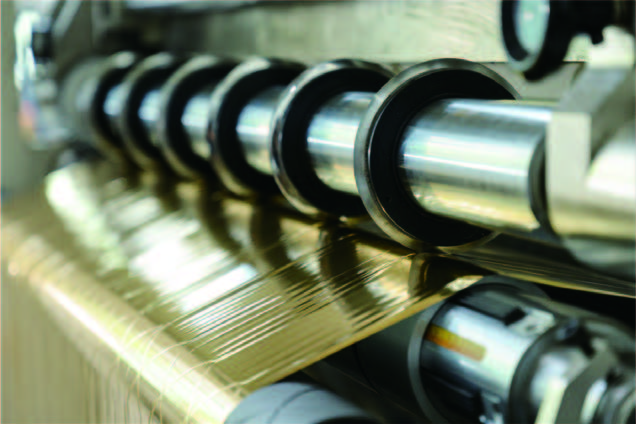
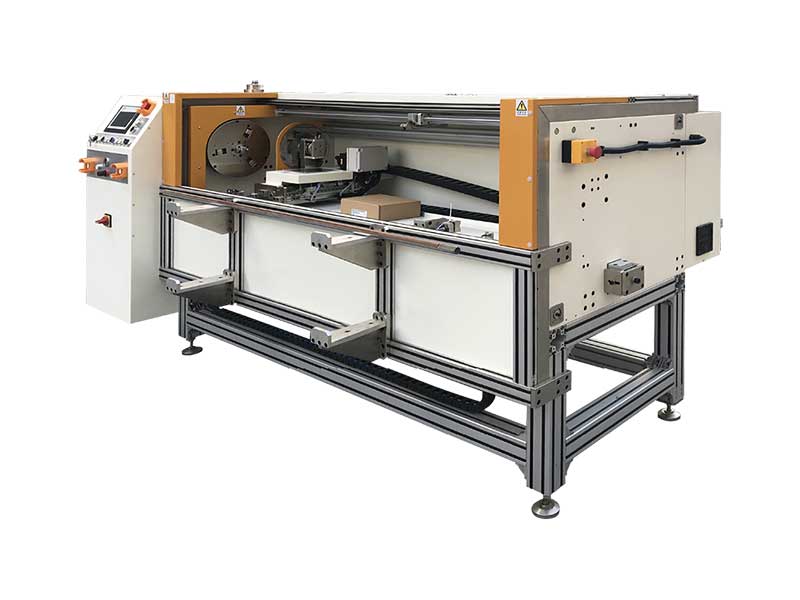 Automatic Foil Roll Cutting Machine
Automatic Foil Roll Cutting Machine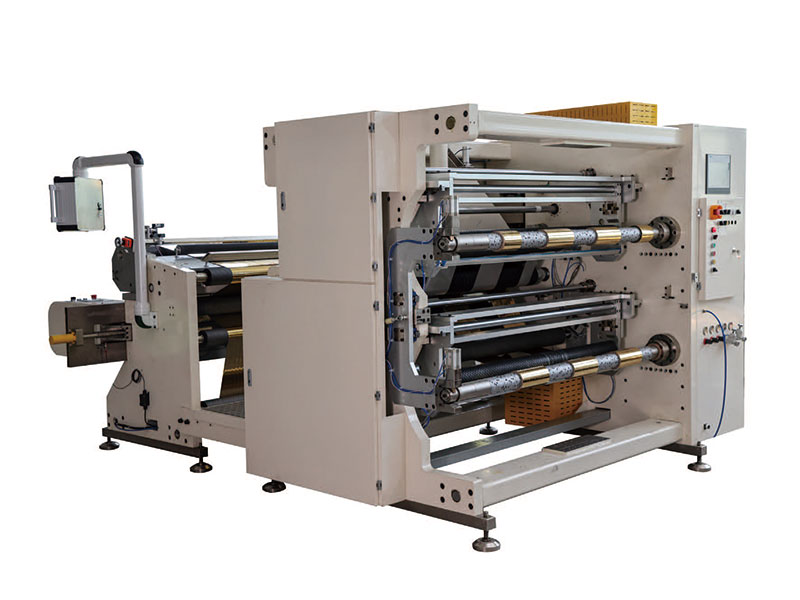 1400mm Hot Stamping Foil Slitting Machine
1400mm Hot Stamping Foil Slitting Machine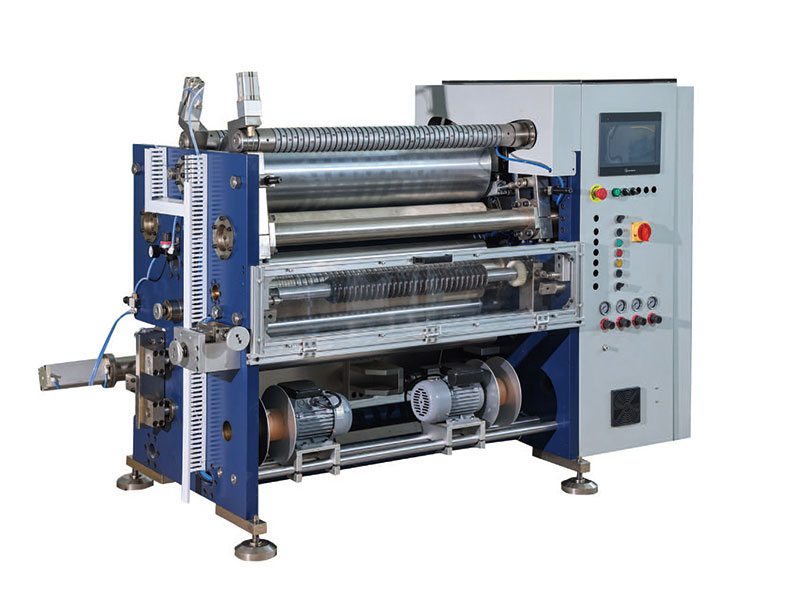 800mm Hot Stamping Foil Slitting Machine
800mm Hot Stamping Foil Slitting Machine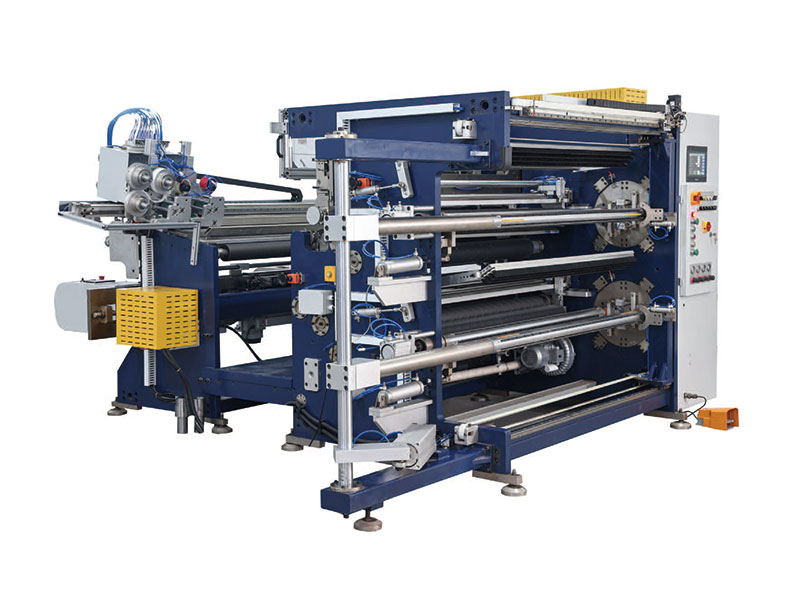 1350mm Hot Stamping Foil Slitting Machine
1350mm Hot Stamping Foil Slitting Machine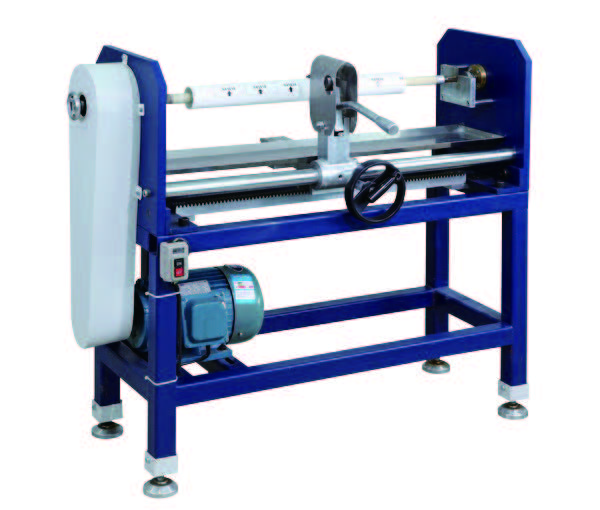 Manual Foil Roll Cutting Machine
Manual Foil Roll Cutting Machine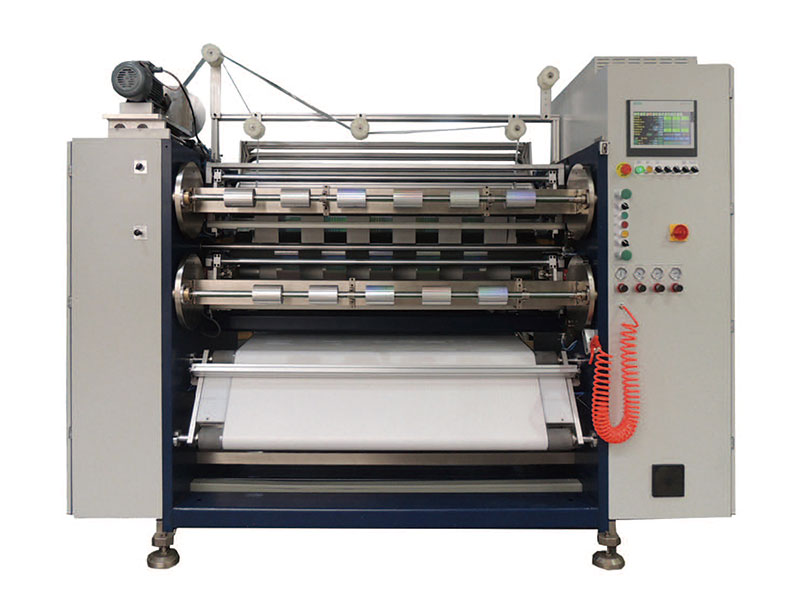 1350mm/1600 Foil Slitting Machine
1350mm/1600 Foil Slitting Machine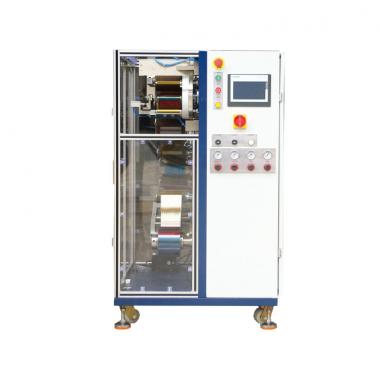 Photo & Card Print Ribbon Rewinding Machine
Photo & Card Print Ribbon Rewinding Machine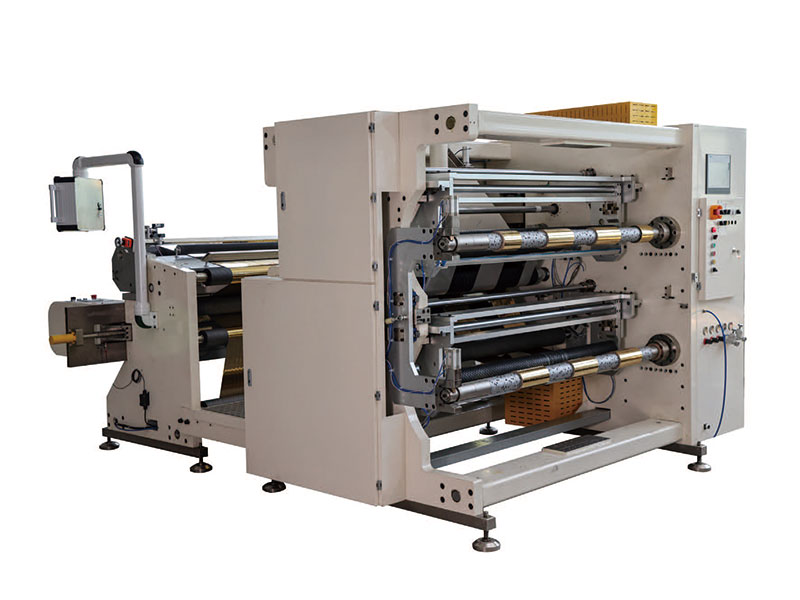 1400mm Copper Foil Slitting Machine
1400mm Copper Foil Slitting Machine

